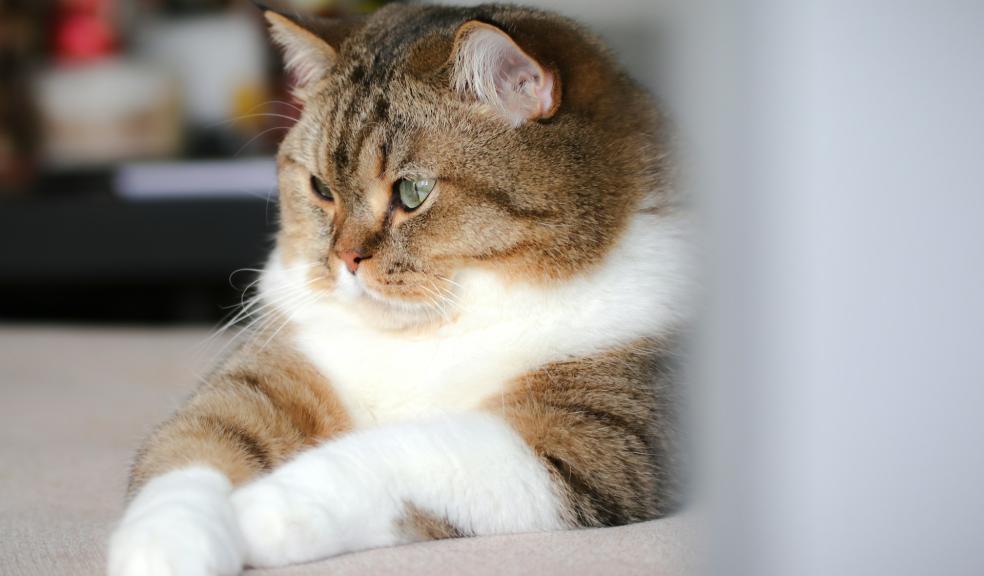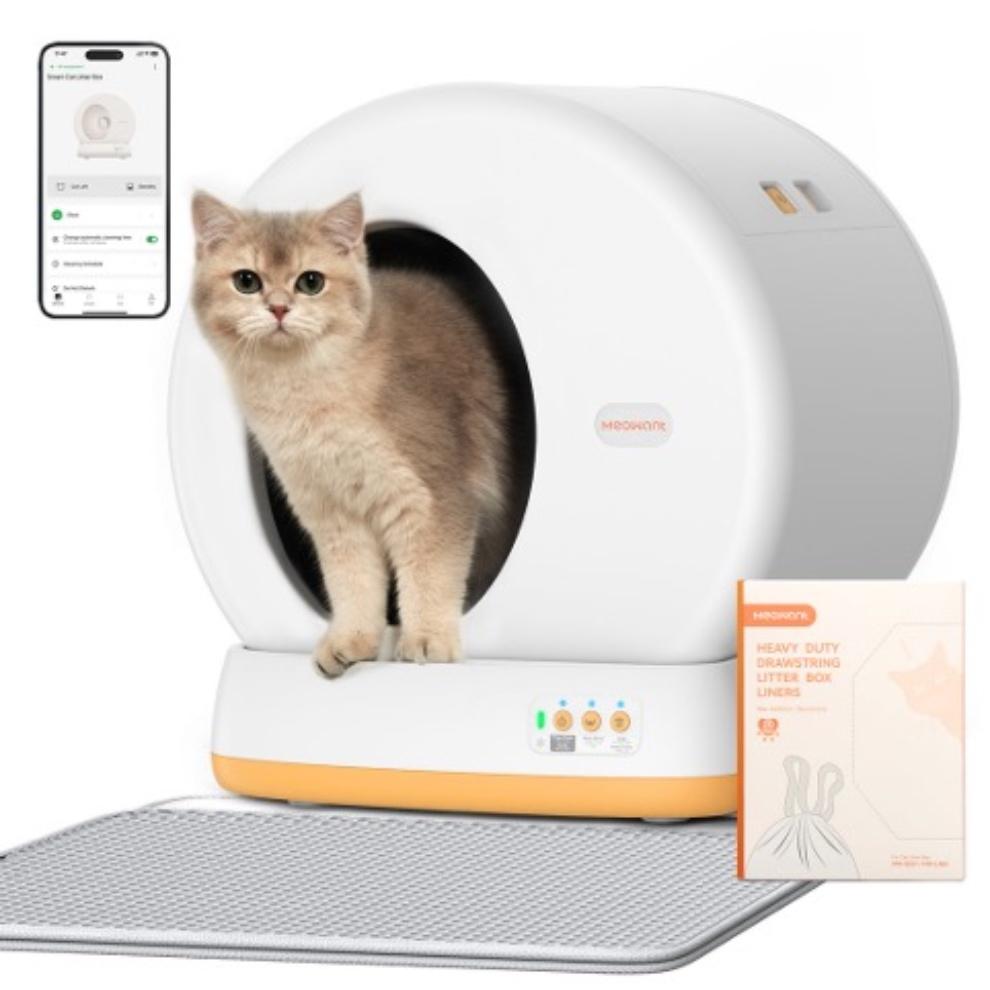
Transform Your Pet's Litter Box Experience with Proven Products
Managing your pet's litter box doesn't have to be a daily chore that consumes your time and tests your patience. Modern automatic litter boxes have revolutionized pet care, offering solutions that keep your home cleaner while giving your cat a consistently fresh bathroom environment. These innovative devices handle the messy work for you, automatically sifting through litter and removing waste within minutes of use. Whether you're a busy professional, frequent traveler, or simply want to minimize unpleasant odors and maintenance tasks, automatic litter boxes provide a practical answer. This guide explores everything you need to know about selecting and using these game-changing products, from understanding core features to evaluating long-term value. You'll discover how the right automatic litter box can transform both your daily routine and your pet's comfort, making litter box management nearly effortless while maintaining the hygiene standards your cat deserves.
Introduction to Automatic Litter Boxes
Automatic litter boxes represent a significant leap forward from traditional manual scooping methods. These self-cleaning systems use sensors to detect when your cat has finished using the box, then activate a cleaning cycle that separates waste from clean litter. Most models feature a rotating drum, raking mechanism, or sifting system that deposits clumps into a sealed waste compartment, effectively isolating odors. The technology has matured considerably over the past decade, with today's units offering reliable performance and quieter operation than earlier generations. While the initial investment exceeds traditional litter boxes, the time savings and improved hygiene make them increasingly popular among cat owners who value convenience without compromising their pet's wellbeing.
Benefits of Using an Automatic Litter Box
The most immediate benefit of automatic litter boxes is the dramatic reduction in daily maintenance time. Instead of scooping multiple times per day, you simply empty the waste drawer every few days, reclaiming hours each week for activities you actually enjoy. Odor control improves significantly since waste gets sealed away within minutes rather than sitting exposed until your next manual cleaning. This creates a more pleasant living environment for both you and your guests. Your cat benefits from consistently clean litter, which can reduce bathroom avoidance issues and encourage proper litter box habits. For households with multiple cats, automatic systems prevent waste buildup that might deter more fastidious felines from using a soiled box. The continuous cleaning cycle also helps you monitor your cat's bathroom frequency, making it easier to spot potential health issues early. Many owners find that automatic boxes reduce litter tracking throughout the home since the enclosed designs contain scatter more effectively than open pans.

Key Features to Look for in a High-Quality Automatic Litter Box
When evaluating automatic litter boxes, prioritize models with reliable motion sensors that accurately detect your cat's presence and departure without triggering false cycles. Look for adjustable delay timers that allow waste to clump properly before the cleaning cycle begins, typically offering settings between three and fifteen minutes. The waste compartment capacity matters significantly—larger drawers mean less frequent emptying, especially important for multi-cat households. Quiet operation is essential to avoid startling nervous cats or disrupting your household peace during nighttime cleaning cycles. Choose units with safety sensors that immediately halt the cleaning mechanism if your cat re-enters during a cycle, preventing potential injuries. Easy-to-clean surfaces and removable components simplify deep cleaning and maintenance. Consider whether the model requires proprietary litter or works with standard clumping varieties, as specialty litter requirements increase ongoing costs. App connectivity has become increasingly common, allowing you to monitor usage patterns and receive maintenance alerts remotely, though this feature adds to the initial investment.
How to Choose the Right Automatic Litter Box for Your Pet
Start by assessing your cat's size and personality—larger breeds need spacious interiors with high weight limits, while anxious cats may prefer covered designs that offer privacy during the cleaning cycle. Consider your household setup, including the number of cats sharing the box and available floor space in your preferred location. Match the waste drawer capacity to your emptying frequency preferences, calculating that each cat typically requires drawer emptying every three to five days. Evaluate your budget against features that matter most to your situation, recognizing that mid-range models often provide the essential functions without premium connectivity features. Test your cat's comfort with enclosed spaces before committing to a fully covered model, as some felines refuse confined litter areas regardless of the cleaning technology.
Top-Rated Automatic Litter Box Brands
Several manufacturers have established themselves as leaders in the automatic litter box market through consistent innovation and reliability. Litter-Robot dominates the premium segment with their globe-shaped rotating design that has earned loyal followers for its durability and thorough waste separation. Their models accommodate cats up to 25 pounds and feature WiFi connectivity for remote monitoring. PetSafe offers mid-range options that balance affordability with solid performance, using rake-style mechanisms that work well for budget-conscious owners seeking basic automation. CatGenie takes a unique approach by washing and drying granules rather than using traditional litter, appealing to owners who want to eliminate litter purchases entirely, though it requires water and electrical connections. Whisker's newer entries combine sleek aesthetics with smart features, targeting tech-savvy pet owners who appreciate app integration and usage analytics. For those seeking compact solutions, brands like ScoopFree provide low-profile designs with disposable litter trays that simplify maintenance. Emerging brands like Meowant are also entering the market with innovative approaches to automated pet care solutions. Each brand offers distinct advantages depending on your priorities—whether that's maximum automation, cost efficiency, space constraints, or environmental considerations—making it essential to match brand strengths with your household's specific requirements.
User Reviews and Testimonials
Cat owners consistently report life-changing improvements after switching to automatic litter boxes, with many wishing they'd made the investment years earlier. Sarah from Portland notes that her Litter-Robot eliminated the daily scooping routine that consumed twenty minutes of her morning, allowing her to enjoy coffee before work instead. Multi-cat households particularly appreciate the continuous cleaning, with James describing how his three cats now share one automatic unit without the territorial disputes that plagued his previous two-box setup. Some users initially worried their cats would reject the automated system, but most report successful transitions within three to five days using gradual introduction methods. The most common praise centers on odor elimination—reviewers frequently mention guests no longer detecting litter box smells in their homes. A few users note that mechanical sounds initially startled nervous cats, though most felines adapted quickly. The convenience factor resonates strongly with travelers, who value the peace of mind knowing their cats have clean facilities during weekend trips without requiring pet sitters for litter duties.
Tips for Maintaining Your Automatic Litter Box
Regular maintenance extends your automatic litter box's lifespan and ensures optimal performance. Empty the waste drawer when it reaches three-quarters full to prevent jams and odor buildup. Perform weekly inspections of sensors and cleaning mechanisms, wiping away any litter dust that might interfere with detection accuracy. Deep clean the unit monthly by removing all litter and washing interior surfaces with pet-safe cleaners, avoiding harsh chemicals that might leave residues your cat finds offensive. Check and replace carbon filters according to manufacturer schedules to maintain effective odor control. Keep the exterior clean and inspect power cords for damage that could pose safety risks. Replenish litter to maintain proper depth, typically two to three inches, as insufficient litter prevents adequate clumping while excess amounts strain the cleaning mechanism.
Comparing Automatic Litter Boxes
Direct comparison reveals significant differences among automatic litter box models that impact daily use. Rotating globe designs excel at waste separation but occupy more floor space than rake-style units, which fit better in tight bathroom corners. Entry height varies considerably—some models sit low to the ground for senior cats or kittens, while others require jumping that challenges less mobile pets. Noise levels during cleaning cycles range from whisper-quiet premium units to budget models with audible motors that may disturb light sleepers. Waste compartment access differs too, with front-loading drawers offering easier emptying than rear-access designs. Consider whether you prefer disposable waste receptacles that eliminate cleaning but increase ongoing costs, or permanent containers that require washing but reduce environmental waste.
The Environmental Impact of Automatic Litter Boxes
Automatic litter boxes present both environmental advantages and challenges that conscientious pet owners should weigh carefully. These systems typically reduce overall litter consumption by maximizing the usable life of clean litter through efficient waste separation, meaning fewer bags purchased and less material sent to landfills annually. The sealed waste compartments allow for more strategic disposal timing, and some owners compost appropriate waste types following local regulations. However, automatic boxes require electricity for operation, adding to your household's energy footprint, though most modern units consume minimal power comparable to a nightlight. Models using disposable waste trays or proprietary litter create additional plastic waste that offsets some conservation benefits. The extended lifespan of quality automatic units—often five to ten years—means fewer products manufactured and discarded compared to replacing traditional boxes every year or two. For environmentally minded owners, choosing models compatible with biodegradable litters, featuring washable components instead of disposables, and selecting energy-efficient designs helps minimize ecological impact while maintaining the convenience benefits that make automatic systems appealing.
Making the Right Choice for Your Home
Automatic litter boxes have transformed pet care by offering practical solutions that benefit both cats and their owners. By understanding the key features, comparing available options, and selecting a system that matches your household's specific needs, you can significantly reduce maintenance time while providing your cat with a consistently clean bathroom environment. Whether you prioritize advanced technology, budget-friendly functionality, or environmental sustainability, today's market offers diverse options to suit every preference. The investment in an automatic litter box pays dividends through improved home hygiene, reduced odors, and the invaluable gift of time returned to your daily schedule. As you make your selection, remember that the best automatic litter box is one that your cat will use comfortably while fitting seamlessly into your lifestyle and maintenance preferences.







